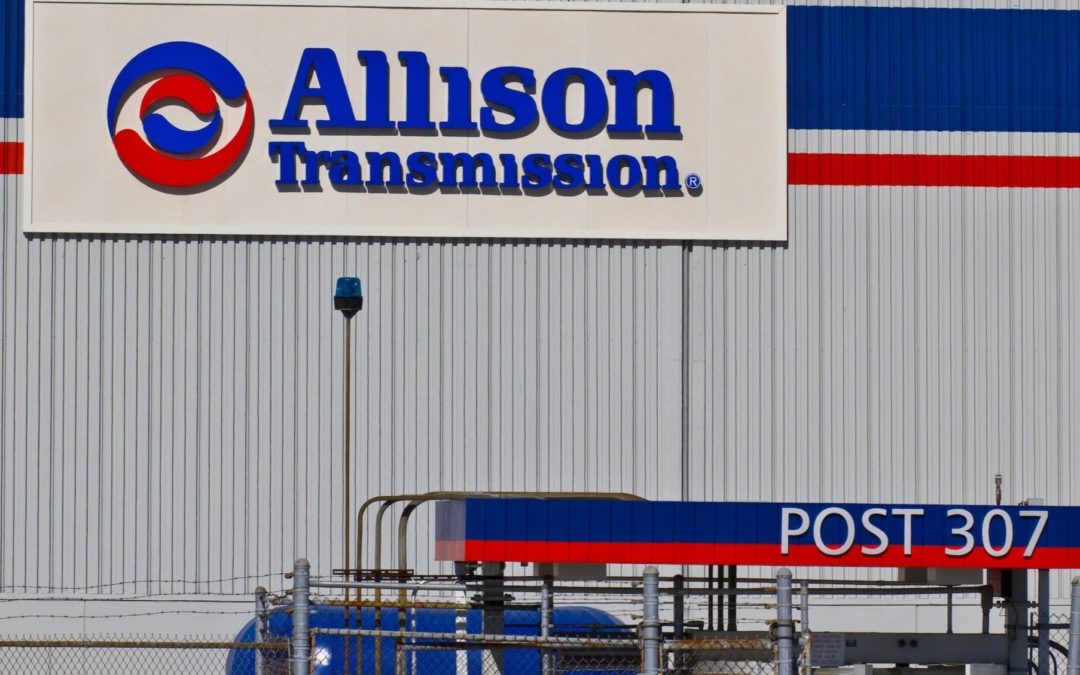Allison transmissions are practically legendary. For over a century, they’ve been integral to the Indianapolis 500, the war effort, and freight. How do they work? How have they lasted so long and built such a reputation? What sorts of problems can they have? And what’s the best way to get the most miles out of them?
History of Allison Transmissions
Allison started in 1909. It was then that James A. Allison and three business partners funded and constructed the Indianapolis Motor Speedway. Two years later, in 1911, Allison’s track held the first Indianapolis 500-mile race. James Allison provided financial backing for several race teams and, in 1915, started his own. He and his company quickly gained a reputation for their race cars and automotive technology innovations.
When World War I started, Allison suspended racing and the Allison Experimental Company turned its attention to machining parts, tools, and masters for the Liberty airplane engine. Allison became the main power plant in the US war effort. The company’s experience and expertise in aviation engineering was one of the primary reasons General Motors wanted to buy the company following James Allison’s death in 1928.
Allison remained a major force in aviation engineering through World War II. At the end of that war, GM put Allison engineers to work in a new field: power transmissions for tracked military vehicles. Their new transmission combined range change, steering, and braking – a revolution in its time.
After WWII, GM turned Allison Transmission loose on civilian transportation. Allison engineers designed, developed, and manufactured the world’s first automatic transmission for heavy-duty vehicles: city buses… locomotives… and delivery trucks.
Allison Transmissions: Inside Look
Today, Allison Transmission is “the largest designer, developer, manufacturer, and distributor of medium- and heavy-duty fully automatic transmissions and hybrid propulsion systems in the world.” Allison Automatics – unlike manual and automated manual transmissions (AMTs) – boasts no power interrupts during shift change. This gives them a unique ability to make the most of the engine’s horsepower and torque, delivering more of it to the truck’s wheels.
Instead of using as many gears as an equivalent manual or AMT, Allison transmissions feature a torque converter. The torque converter multiplies engine output torque to create a range of low-end ratio coverage. This allows the Allison to act as a continuously-variable transmission, giving trucks the power to move faster out of a steep grade or a loading ramp.
The torque converter acts as a fluid drive between the engine and transmission. This creates a cushion effect which reduces shock and strain across the entire driveline. This benefits not only the engine but also the universal joints and the rear axle, prolonging their operating life.
The output shaft delivers horsepower. Allison’s spline is patented because of its unique design that allows for a greatly increased amount of torque– and with it, faster acceleration and improved performance.
Common Issues with Allison Transmissions
Custom-designed for several different industries and proven to deliver reliable power and work, Allison transmissions have moved America for over a century, but, at the end of the day, they’re still machines and machines inevitably break down and experience problems. In the event of a part failure in an Allison transmission, the best option is usually to take advantage of the warranty. However, the three (3) most common issues are actually failsafe:
- Incorrect hookup
- Limp mode (in the Allison 1000 model)
- TCM module problem
Let’s take a brief look at each…
Incorrect Hookup
It’s entirely possible that the transmission itself is in working order and was simply put into the vehicle incorrectly. In older makes and models, start by checking the vacuum lines and other parts which connect to the transmission. If you notice anything out of order, reattach the connections and see if the problem happens again.
Limp Mode (Allison 1000 Model)
The Allison 1000 model transmission is built with a feature called “limp mode.” In limp mode, the transmission locks itself in third gear. This is triggered by overheating, towing a particularly heavy load, or anything that could potentially cause damage to the transmission. If you’re running an Allison 1000 transmission, make sure to keep it well-maintained to try to avoid triggering limp mode. Once limp mode is triggered, the driver cannot reverse it. In most cases, the transmission has to be rebuilt.
TCM Module
Allison transmissions built in the mid-2000s were subject to a recall on their TCM module. If you think your TCM module has never been replaced, contact the manufacturer and ask about the best way to get this issue resolved. Don’t ignore it and keep driving a vehicle with a faulty transmission part!
Proper maintenance and normal usage go a long way with any vehicle, but Allison transmissions normally last a very long time with few – if any – problems. But– don’t be complacent! Machines are only as good as their operators. To make sure your Allison transmission (and other systems) are able to keep working as hard as you do, sign up for Diesel Repair. Start today for FREE and keep moving!


What about the 2009-2015 #25246861 TCM that is no longer available? Check that one out.
I agree! It is literally non existent in the US right now.